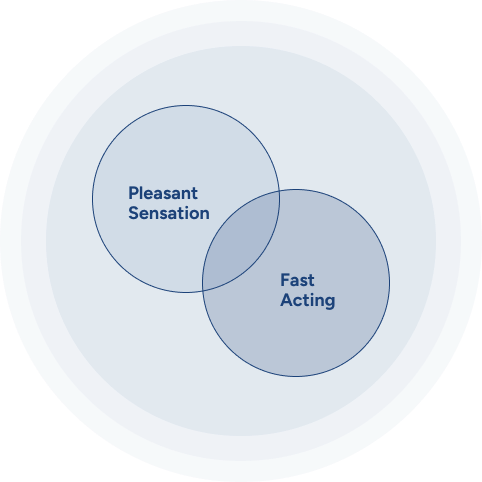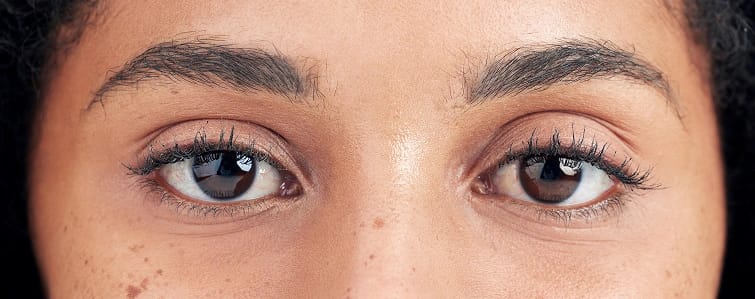Speak with a Specialist Today
On call for you 24/7
Home / Drug & Alcohol Rehab Programs Across New England OLD / Klonopin Addiction: Abuse Signs & Treatment Options
There is, sadly, no question about the dangers presented by prescription drug use disorders. The number of people who have abused prescription drugs has skyrocketed over the past decade, with tens of thousands of people dying as a result of this scourge.
Prescription drug abuse comes in many forms. One of the most dangerous is when people abuse opioids, a class of drugs that is supposed to be used for pain and that can be extremely addictive. However, benzodiazepines, also known as benzos, are among the more addictive classes of drugs. One of the best-known examples of benzos is Klonopin, a tranquillizer that is used to treat anxiety and seizure disorders. Unfortunately, Klonopin can also be extremely addictive, and that addiction can result in death.
Klonopin is the brand name for clonazepam. It is a benzodiazepine and acts as a sedative or tranquilizer. Its most common use is for anxiety disorders. Klonopin works very quickly to stop an anxiety attack in its tracks, flooding its user with a sense of calm and peace. It is fast-acting and can often begin to work in as little as 10 minutes. Its effects can typically last for between 8-12 hours although it stays in your system for longer. The drug works best when taken sublingually, meaning under the tongue. It will dissolve and go directly into the bloodstream, allowing its effects to be felt faster.
As of 2018, there were more than 17 million Klonopin prescriptions in the United States, making it the 43rd-most popular drug in the country. The most common use of Klonopin is for the treatment of anxiety and as an anti-seizure drug. It can also be used as a treatment for restless leg syndrome since it can help to calm the muscles.
Klonopin works by reducing segments of activity within your brain. Specifically, it enhances the effects of GABA, or gamma-aminobutyric acid. GABA is a type of neurotransmitter that works to slow the activity in your brain. Klonopin makes the effects of GABA stronger, thus slowing down segments of brain activity and specifically slowing down certain nerves and muscle activities. These actions can have multiple effects on your body, including reducing anxiety, cognitive function, reaction time, and muscle movements.
The areas that Klonopin targets help to explain its use and also explain its rather extensive list of side effects because GABA is involved in quite a few brain functions. Unfortunately, scientists have yet to determine a way to make the effects of Klonopin more targeted. This also explains why the drug can be addictive and why it is so ripe for abuse.
People who take Klonopin often report that they feel much more relaxed and at peace. Muscles are less likely to move involuntarily, and anxiety attacks abate. This is what the drug is designed to do. However, there are a variety of negative side effects that can occur when someone takes Klonopin.
Because of the way that Klonopin works and the extensive impact it has on your body and your brain, there are a variety of side effects that are very common with its use. These include:
Of course, not everyone experiences these side effects, and some people will experience worse side effects than others, but all of the above is possible when it comes to Klonopin use.
These side effects are common, but they are typically more manageable. More serious side effects are possible but thankfully are rare. Serious issues include hallucinations, severe confusion, and difficulty breathing. You should seek medical attention if you experience any of these issues.
While Klonopin unquestionably has numerous benefits, it has many features that make it dangerous, susceptible to abuse, and susceptible to withdrawal symptoms.
Broadly speaking, Klonopin has many standard features that make it ripe for addiction. Taking it will often feel good for the user. It can help to create a series of pleasant sensations, including relaxation. It is fast-acting, meaning that its euphoric effects can be felt very quickly. However, despite its fast-acting nature, some people will still snort the drug, putting them at an increased chance of developing an addiction or overdosing.
Regular users of Klonopin may develop a tolerance to the drug. This means that they will need to take larger amounts of the drug in order to get the same sensations. Developing a tolerance is not indicative of a use disorder; after all, there are many legitimate reasons why someone may need to take Klonopin on a regular basis. However, the fact that Klonopin use may create a tolerance does increase the odds that someone may develop an addiction to the treatment since taking more of the drug is likely to make someone become more dependent on it.

Finally, it is possible to overdose and die from Klonopin. As noted above, Klonopin works by interacting with your brain to reduce electrical signals, thus calming your brain and your nerves. The problem, of course, is that this drug can work too well, potentially reducing wanted and needed activity in your brain. This can result in the suppression of vital organs, leading to injury or death.
Unfortunately, this is not an uncommon occurrence. Klonopin overdose is linked to thousands of overdoses every year. Furthermore, the number of overdoses that occur as a result of Klonopin use continues to rise. Klonopin is one of the more popular and well-known benzos, and as of 2019, 16% of all overdose deaths involving opioids also involved benzos like Klonopin.

When taken as part of a comprehensive effort to improve mental health or to regulate muscles or seizure problems, Klonopin can be a highly effective drug. Unfortunately, the wide range of side effects that someone experiences when taking Klonopin make the drug ripe for abuse.
Klonopin abuse has increased as Klonopin prescriptions have done the same. It is unfortunately common for Klonopin to be abused in conjunction with other medications or drugs, such as alcohol or opioids. Taking such combinations can be extremely dangerous, if not deadly.
Klonopin abuse occurs when someone takes the drug for reasons other than those prescribed. The tranquil and sometimes euphoric side effects that someone feels when he or she takes the medication are often enjoyable, and people will take the drug in order to experience these sensations.
Klonopin can also be abused when more is taken than a doctor prescribes. Since the drug is so strong, people usually start at the lowest amount, which is half a milligram. The dosage is then increased as needed. Upping the dose, of course, can also increase the potency of the drug and the side effects that are felt, including those feelings of euphoria or relaxation.
Tragically, the nature of benzodiazepines and the tranquil feelings that they can inspire make this drug extremely ripe for abuse. Warnings about its addictiveness are becoming more common with the United States Food & Drug Administration recently requiring that the makers of many types of benzos, including Klonipan, give printed warnings about how addictive they are and what their risks are.

Signs of a Klonopin addiction can be many faceted and can appear in numerous ways, including:
If someone has overdosed on Klonopin, the effects are often clear to see. A person may appear completely disoriented or out of it. He or she may be unconscious, have slow or shallow breathing, or not be breathing at all. The individual may be unconscious or appear to be in a deep sleep. If you believe that someone has overdosed on Klonopin, or any other drug, call 911 immediately. Quick medical intervention can save the life of someone who has overdosed on a drug, but that call must happen as quickly as possible.

Thankfully, there are many forms of treatment for Klonopin addiction; indeed, programs to treat this type of addiction are very common.
Like in many other forms of addiction, you should work with your loved ones, doctors, and addiction professionals to determine the best course of action for you. They may recommend a variety of potential treatment courses. More severe cases of addiction may require inpatient treatment. This is a type of addiction treatment in which an individual lives in a rehabilitation facility for a set period of time. During this period, the person will be under 24/7 supervision and will undergo intensive therapy. By contrast, outpatient therapy is a form of therapy in which a person will undergo therapy but will live at home. Depending on the circumstances, the person may even be able to continue work or school during this time.
Unfortunately, at the moment, there is no medication-assisted therapy for Klonopin addiction. This means that a person must rely exclusively on psychological forms of counseling. Thankfully, there are many types of counseling, including:
It is important to realize that treatment options do exist for Klonopin addiction. One such example is Granite Recovery Center, which offers a variety of state-of-the-art, evidence-based treatment options, including treatment for mental illness, substance use disorders, and more. The sooner you or your loved one can be treated for a Klonopin addiction, the better because early intervention will increase your chances of a successful recovery. Don’t wait another second wondering if this disorder will take your life. Instead, call today at 1-855-712-7784, and immediately start your journey to recovery with us at Granite Recovery Center.
If you want to visit one of our New England drug rehab centers, please contact us at Granite Recovery Centers. Our experts will work with you to find a high-quality treatment option that meets your needs. We strive to provide a holistic level of treatment with evidence-based care, giving you the help necessary to regain your sobriety for good.

Granite Recovery Services does not discriminate on the basis of race, color, religion, sex, sexual orientation, gender identity or expression, national origin, ancestry, physical or mental disability, age, marital status or receipt of public assistance in the admission or access to or treatment in its programs or activities.
On call for you 24/7
| Cookie | Duration | Description |
|---|---|---|
| __cf_bm | 1 hour | This cookie, set by Cloudflare, is used to support Cloudflare Bot Management. |
| .AspNetCore.Cookies | 11 months | This cookie is installed by BayMark Health Services, Inc. The cookie is used to maintain persistence with ChatGPT sessions. |
| .AspNetCore.CookiesC1 | 11 months | This cookie is installed by BayMark Health Services, Inc. The cookie is used to maintain persistence with ChatGPT sessions. |
| .AspNetCore.CookiesC2 | 11 months | This cookie is installed by BayMark Health Services, Inc. The cookie is used to maintain persistence with ChatGPT sessions. |
| .AspNetCore.CookiesC2 | 11 months | This cookie is installed by BayMark Health Services, Inc. The cookie is used to maintain persistence with ChatGPT sessions. |
| .AspNetCore.CookiesC3 | 11 months | This cookie is installed by BayMark Health Services, Inc. The cookie is used to maintain persistence with ChatGPT sessions. |
| .AspNetCore.CookiesC3 | 11 months | This cookie is installed by BayMark Health Services, Inc. The cookie is used to maintain persistence with ChatGPT sessions. |
| AspNetCore.Cookies | 11 months | This cookie is installed by BayMark Health Services, Inc. The cookie is used to maintain persistence with ChatGPT sessions. |
| AspNetCore.CookiesC1 | 11 months | This cookie is installed by BayMark Health Services, Inc. The cookie is used to maintain persistence with ChatGPT sessions. |
| cookielawinfo-checkbox-advertisement | 1 year | Set by the GDPR Cookie Consent plugin, this cookie records the user consent for the cookies in the "Advertisement" category. |
| cookielawinfo-checkbox-analytics | 11 months | This cookie is set by GDPR Cookie Consent plugin. The cookie is used to store the user consent for the cookies in the category "Analytics". |
| cookielawinfo-checkbox-functional | 11 months | The cookie is set by GDPR cookie consent to record the user consent for the cookies in the category "Functional". |
| cookielawinfo-checkbox-necessary | 11 months | This cookie is set by GDPR Cookie Consent plugin. The cookies is used to store the user consent for the cookies in the category "Necessary". |
| cookielawinfo-checkbox-others | 11 months | This cookie is set by GDPR Cookie Consent plugin. The cookie is used to store the user consent for the cookies in the category "Other. |
| cookielawinfo-checkbox-performance | 11 months | This cookie is set by GDPR Cookie Consent plugin. The cookie is used to store the user consent for the cookies in the category "Performance". |
| CookieLawInfoConsent | 1 year | CookieYes sets this cookie to record the default button state of the corresponding category and the status of CCPA. It works only in coordination with the primary cookie. |
| elementor | never | The website's WordPress theme uses this cookie. It allows the website owner to implement or change the website's content in real-time. |
| viewed_cookie_policy | 11 months | The cookie is set by the GDPR Cookie Consent plugin and is used to store whether or not user has consented to the use of cookies. It does not store any personal data. |
| wpEmojiSettingsSupports | session | WordPress sets this cookie when a user interacts with emojis on a WordPress site. It helps determine if the user's browser can display emojis properly. |
| Cookie | Duration | Description |
|---|---|---|
| yt-player-bandwidth | never | The yt-player-bandwidth cookie is used to store the user's video player preferences and settings, particularly related to bandwidth and streaming quality on YouTube. |
| yt-player-headers-readable | never | The yt-player-headers-readable cookie is used by YouTube to store user preferences related to video playback and interface, enhancing the user's viewing experience. |
| yt-remote-cast-available | session | The yt-remote-cast-available cookie is used to store the user's preferences regarding whether casting is available on their YouTube video player. |
| yt-remote-cast-installed | session | The yt-remote-cast-installed cookie is used to store the user's video player preferences using embedded YouTube video. |
| yt-remote-connected-devices | never | YouTube sets this cookie to store the user's video preferences using embedded YouTube videos. |
| yt-remote-device-id | never | YouTube sets this cookie to store the user's video preferences using embedded YouTube videos. |
| yt-remote-fast-check-period | session | The yt-remote-fast-check-period cookie is used by YouTube to store the user's video player preferences for embedded YouTube videos. |
| yt-remote-session-app | session | The yt-remote-session-app cookie is used by YouTube to store user preferences and information about the interface of the embedded YouTube video player. |
| yt-remote-session-name | session | The yt-remote-session-name cookie is used by YouTube to store the user's video player preferences using embedded YouTube video. |
| ytidb::LAST_RESULT_ENTRY_KEY | never | The cookie ytidb::LAST_RESULT_ENTRY_KEY is used by YouTube to store the last search result entry that was clicked by the user. This information is used to improve the user experience by providing more relevant search results in the future. |
| Cookie | Duration | Description |
|---|---|---|
| _uetsid | 1 day | Bing Ads sets this cookie to engage with a user that has previously visited the website. |
| _uetvid | 1 year 24 days | Bing Ads sets this cookie to engage with a user that has previously visited the website. |
| Cookie | Duration | Description |
|---|---|---|
| _fbp | 3 months | Facebook sets this cookie to display advertisements when either on Facebook or on a digital platform powered by Facebook advertising after visiting the website. |
| _ga | 1 year 1 month 4 days | Google Analytics sets this cookie to calculate visitor, session and campaign data and track site usage for the site's analytics report. The cookie stores information anonymously and assigns a randomly generated number to recognise unique visitors. |
| _ga_* | 1 year 1 month 4 days | Google Analytics sets this cookie to store and count page views. |
| _gat_UA-* | 1 minute | Google Analytics sets this cookie for user behaviour tracking. |
| _gcl_au | 3 months | Google Tag Manager sets the cookie to experiment advertisement efficiency of websites using their services. |
| _gid | 1 day | Google Analytics sets this cookie to store information on how visitors use a website while also creating an analytics report of the website's performance. Some of the collected data includes the number of visitors, their source, and the pages they visit anonymously. |
| _hjSession_* | 1 hour | Hotjar sets this cookie to ensure data from subsequent visits to the same site is attributed to the same user ID, which persists in the Hotjar User ID, which is unique to that site. |
| _hjSessionUser_* | 1 year | Hotjar sets this cookie to ensure data from subsequent visits to the same site is attributed to the same user ID, which persists in the Hotjar User ID, which is unique to that site. |
| _hjTLDTest | session | To determine the most generic cookie path that has to be used instead of the page hostname, Hotjar sets the _hjTLDTest cookie to store different URL substring alternatives until it fails. |
| Cookie | Duration | Description |
|---|---|---|
| __ctmid | 1 month | CallTrackingMetrics sets this cookie to determine the advertising channel that led a visitor to the website and also show the tracking phone number that corresponds to that channel. |
| fr | 3 months | Facebook sets this cookie to show relevant advertisements by tracking user behaviour across the web, on sites with Facebook pixel or Facebook social plugin. |
| MUID | 1 year 24 days | Bing sets this cookie to recognise unique web browsers visiting Microsoft sites. This cookie is used for advertising, site analytics, and other operations. |
| test_cookie | 15 minutes | doubleclick.net sets this cookie to determine if the user's browser supports cookies. |
| VISITOR_INFO1_LIVE | 6 months | YouTube sets this cookie to measure bandwidth, determining whether the user gets the new or old player interface. |
| VISITOR_PRIVACY_METADATA | 6 months | YouTube sets this cookie to store the user's cookie consent state for the current domain. |
| YSC | session | Youtube sets this cookie to track the views of embedded videos on Youtube pages. |
| yt.innertube::nextId | never | YouTube sets this cookie to register a unique ID to store data on what videos from YouTube the user has seen. |
| yt.innertube::requests | never | YouTube sets this cookie to register a unique ID to store data on what videos from YouTube the user has seen. |
| Cookie | Duration | Description |
|---|---|---|
| ct213024 | session | Description is currently not available. |
| ENTERPRISE_SESSION | 7 days | Description is currently not available. |
| guest | 1 month | No description available. |
| JOTFORM_SESSION | 1 month | No description available. |
| MSPTC | 1 year 24 days | Description is currently not available. |
| userReferer | 1 month | No description available. |